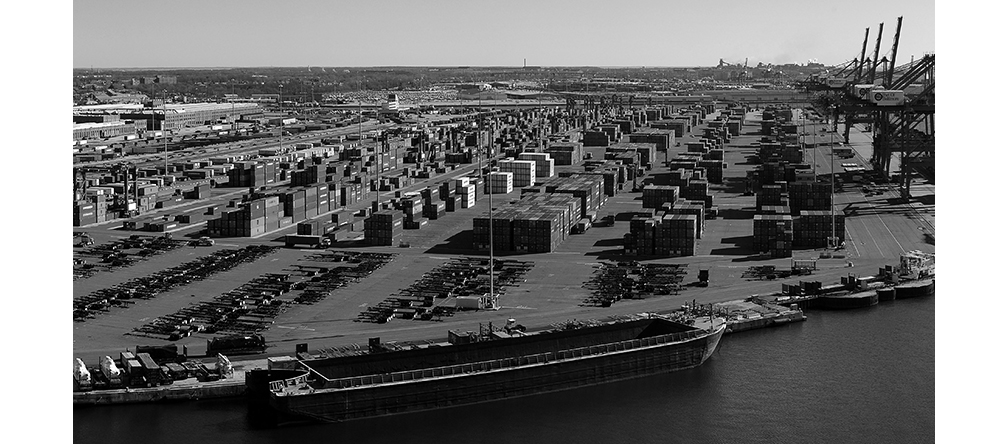How the Baltimore Bridge Collapse Is Testing Supply Chains

A major disaster occurred in late March when a ship collided with Baltimore’s Francis Scott Key Bridge in the Port of Baltimore. This led to the bridge’s collapse and closing of the port. The Port of Baltimore, a crucial node in the global supply network, will remain closed indefinitely. It’s uncertain how long it will take to clear the debris to reopen the passage, making logistics more complicated, testing the resilience and adaptability of the supply chains for both national and global markets.
In this article we will be highlighting the importance of the Port of Baltimore, what industries the bridge’s collapse is affecting most and how you can stay ahead of global disruptions by building supply chain resiliency.
The Importance of the Port of Baltimore
Despite managing only 4% of East Coast trade, the Port of Baltimore is crucial to the U.S. automotive industry. It has handled more automobiles and light trucks than any other U.S. port for the past 13 years, with a record-breaking 847,158 vehicles processed in 2023 alone. This specialization highlights not only the port’s strategic importance in the automotive supply chain but also its efficiency and capacity to manage high-volume, high-value cargo.
Apart from its direct trade activities, the Port of Baltimore is a significant economic engine for the region. It is responsible for over 15,000 jobs, playing a crucial role in the livelihood of many Maryland residents. Furthermore, its operations generated a staggering $4.7 billion in economic value for the state of Maryland last year. The port plays a critical role not just in terms of cargo throughput, but also in its broader economic impact, affecting various sectors of the state’s economy.
What Is Being Affected Most by the Bridge Collapse
The collapse of the Baltimore bridge is causing severe implications for the logistics and transportation sectors. It is disrupting the daily movement of around 5,000 trucks that transport a wide range of goods worth approximately $28 billion. Due to the collapse, these trucks are facing significant delays and increased fuel costs, inflating operational costs and complicating delivery schedules.

The automotive industry is one of the sectors feeling the strain, but it has also shown robust resilience due to recent inventory adjustments. In February, the U.S. auto industry reported an inventory-to-sales ratio reaching 80 days of supply, which was a substantial buffer that climbed to 52% higher than the previous year by early March. This stockpile has positioned car dealers and manufacturers to better absorb the immediate shocks of the port’s temporary closure.
The bridge collapse presents a potential opportunity for the trucking and rail sectors. With the main East Coast entry point compromised, there is an increasing demand for overland transportation services to reroute goods from the West to the East Coast. This shift could lead to a temporary boom for these industries, as they work to bridge the gap caused by the maritime standstill. However, this also means navigating the challenges of increased demand, which could stretch the capacity of these alternative transport routes and potentially lead to higher costs for end consumers.
Building Supply Chain Resiliency
In the wake of recovery from logistical problems caused by the pandemic, global supply chains have shown an improved resiliency and a proven capacity to increase workload. For example, the nearby ports of New York and New Jersey were handling 20% more cargo in 2021 than they are now, something they could not have done pre-pandemic.
Resiliency is paramount in today’s global supply chain. Here are several ways you can improve your company’s supply chain resiliency and stay prepared for future global disruptions.

Diversify Your Supply Chain
Avoid depending on a single supplier or a single country for your supplies. Instead, broaden your supply chain with partnerships across multiple suppliers and countries. This can help minimize disruptions caused by geopolitical or natural disasters.
Invest in Digital Technologies
Digital technologies such as the internet of things (IoT), blockchain and artificial intelligence (AI) can provide a real-time and comprehensive view of a supply chain, enabling you to enhance operations. For instance, IoT sensors can monitor the location and condition of products, while AI can analyze data to identify and predict potential risks and demand.
Collaborate and Communicate with Suppliers
Collaborate with suppliers, customers and logistics partners early and often to share information and identify potential risks in the supply chain. This can help mitigate risk severity and enable a quick response to disruptions.
Increase Redundancy
Have alternative suppliers at your disposal, backup inventory and redundant logistics capacity to ensure continuity of operations in case of any disruptions.
Continuously Evaluate
Consistently evaluate your supply chain performance to detect areas for improvement, which can help you stay ahead of potential risks and enhance resiliency over time.
Stay Ahead with SupplySight
R.S. Hughes’ Inventory Management Program can also help you streamline your supply chain by ensuring your inventory stays organized and that your overall management plan is optimized and efficient keeping your focus on the job.

Full Visibility and Control
Ensure you have all the essential products and supplies available whenever you need them. Our program lets you manage account access and set limits on purchases to streamline your operations. Lead times no longer exist with same-day and next-day shipping, leading to increased efficiency and greater warehouse space. Moreover, you can easily manage your product inventory through our mobile app, which allows you to scan, count and reorder products without any hassle.
Cost Savings
Improve your inventory management by utilizing intelligent automation to ensure optimal stock levels, avoiding both overstocking and shortages. You can enhance accountability and reduce the risk of missing items by connecting product tracking with employee ID numbers. To further streamline your supply chain, consignment vending options are available.
Best-In-Class Customer Service
Create a personalized inventory plan that aligns with your business goals and boosts your confidence in managing your inventory. Our team of experts works closely with you to provide holistic views of performance with data-backed insights and optimizations—this ensures that your inventory management plan evolves effectively over time.
Want to know how you can further optimize and build supply chain resiliency? Start by connecting with one of our SupplySight experts.